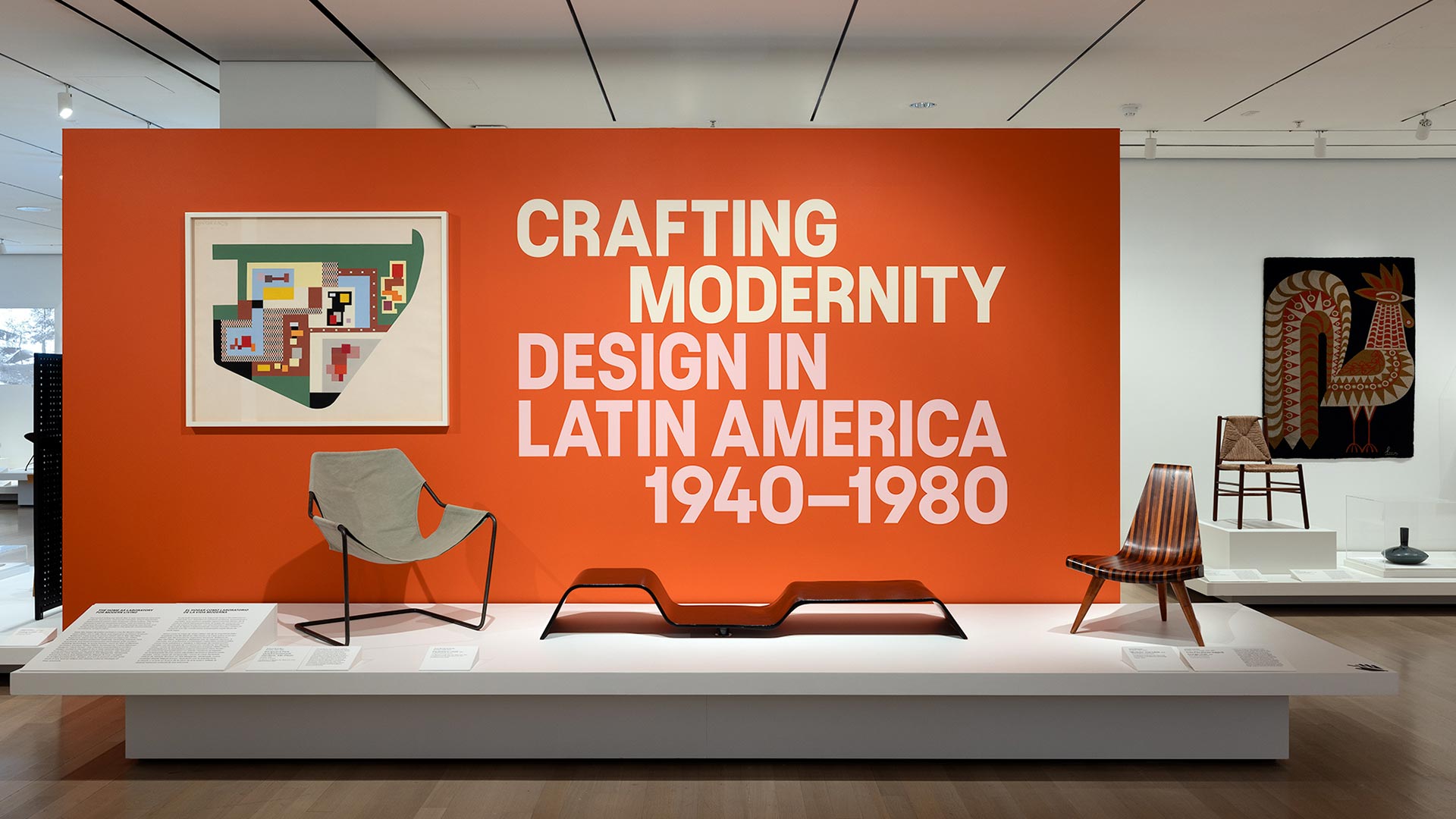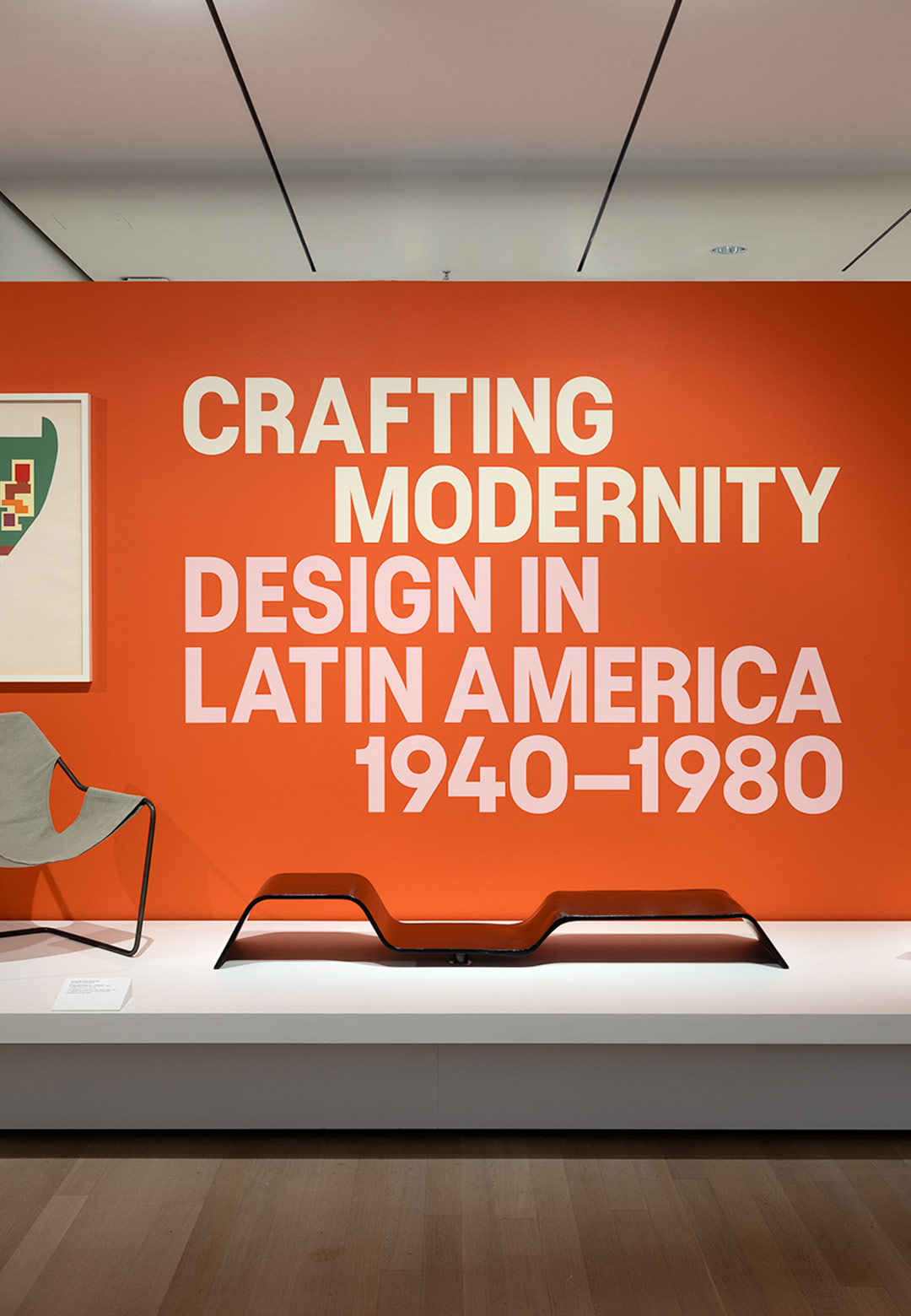Modernism outside the West is most commonly regarded as an export of Western ingenuity and ideologies, a stance that often masks the voices of local designers, while it is exactly these regions that have been the experimentation grounds for many modernist design principles. Recently, major museums like the Museum of Modern Art, New York and the Victoria and Albert have tried to address this gap, by making space for the different histories of modernity, or what we might call modernities that developed tangentially to the Western model. This is seen in the albeit polemic Tropical Modernism currently on view at the V&A in London, with MoMA’s previous showcase The Project of Independence and with the current design exhibition Crafting Modernity: Design in Latin America, 1940–1980, which brings together more than 100 objects, including furniture, graphic design, textiles, ceramics, and photography, drawn from the museum and public and private collections across the United States, Latin America, and Europe.
Organized by Ana Elena Mallet, guest curator at the museum, the exhibition focuses on six countries—Argentina, Brazil, Chile, Colombia, Mexico, and Venezuela—where the grounds were laid for the development of modern domestic design in Latin America. The choice to focus on domestic design is worth noting. The home would becomes a site for the formation of modern individualities, with a renewed focus on national identity given that revolutions in Latin American countries also marked this period. Such exhibitions, apart from highlighting often forgotten voices—and looking at the all-encompassing phenomenon of modernism through a non-Eurocentric lens—showcase how it spurs not only larger political, social, and cultural transformations but equally impacts the everyday.
The showcase at the MoMA, on display until September 22, 2024, is centred around the postwar period (1940-1980s), which was an era of dramatic transformations owed to economic growth driven by internal development as against the outward orientation practised by Latin America as a response to growing nationalist sentiment and developmental policies. This led countries to replace traditionally imported goods with domestically produced products, leading to the exponential growth of industrialisation, and generation of professional opportunities for local designers. The different sections on display—The Home as Laboratory for Modern Living; Embodying Modernism: the BKF Chair; Beyond Boundaries: Latin America's Creative Circles; and Crafting a Collective Legacy: From Local Workshops to National Industries—highlight this elaborate history through artefacts such as Michael van Beuren’s Alacran lounge chair, Clara Porset’s low-cost furniture designs, and designs by architects such as Oscar Niemeyer, and Antonio Bonet.
The gallery’s introductory text quotes Cuban-Mexican designer Clara Porset stating, “Design is only a result; its purpose is to cooperate in raising the general standard of living by bringing in efficiency and artistry to one’s daily circumstances.” This attention to merging efficiency and artistry would see Latin American designers and architects trained in avant-garde design principles in the United States and Europe returning to their native countries and experimenting with combining traditional techniques and materials with new technologies, in the process remaining true to specific environmental conditions.
Many designers, such as Porset and Cornelis Zitman, also engaged with local craft traditions as highlighted by the objects on display. The first section commences with case studies on the designs of Lina Bo Bardi’s Casa de Vidro (Brazil, 1951) and Alfredo Boulton’s house in Pampatar—where the furniture was designed by Miguel Arroyo (Venezuela, 1953)—to serve as the opening chapter to how ideas of modern living were disseminated, becoming paramount for fostering design in the region. The exhibition also details how this period saw the emergence of design as a formal profession in Latin America, with designers envisioning regional utopias based on the ideals of progress and incessant modernization.
A section is dedicated to a particular chair design for the BKF chair. A collaborative project by Grupo Austral—a collective of three architects from Argentina, Antonio Bonet, Juan Kurchan, and Jorge Ferrari Hardoy—-it involved redesigning the Tripolina, a portable chair made of wood, metal swivel joints, and animal hide. The group replaced the wood base with tubular metal, giving it a sleeker look, and it was soon acquired by then MoMA curator Edgar Kaufmann Jr. for the museum and his residence in Pennsylvania (designed by American architect Frank Lloyd Wright).
The section highlights how the chair soon became emblematic of modern living. Finally, the exhibition shifts its focus to the rise of local industries and workshops and their impact on design identity in the region. Designs by Michael van Beuren and Geraldo de Barros shed light on how designers adapted standardised production models to local tastes and market conditions, while other designers, like Martin Eisler, would go on to work with international brands like Knoll and Herman Miller.
Within this landscape, some designers, such as Michael van Beuren and Geraldo de Barros, created production models tailored to local tastes and market conditions, while other designers, like Martin Eisler, chose to represent international brands like Knoll and Herman Miller. By not only focusing on how factories adjusted their production to local conditions and showcasing craft industries such as Cynthia Sargent or Ruben Nuñez, but the display also does a good job of showcasing the dichotomy of design under modernism, on the one hand, mass-produced while on the other hand asserting a national identity through the representation of craft.
To this end, the display also includes materials related to MoMA’s Industrial Design Competition for the 21 American Republics in 1940 and the subsequent 1941 exhibition Organic Design in Home Furnishings, which featured winning entries. In postwar and Cold War era America, MoMA would emerge as a disseminator of soft power in the form of the material culture of American domestic lifestyle, proclaiming the benefits of democracy and by extension capitalism–which was equated with modernism–over other political ideologies. For instance, in the 1941 exhibit, Latin American designers were encouraged to “engage their local materials and construction methods,” which winners of the competition did end up doing.
Towards the end of the 1970s, developmental attitudes would begin to wear down, marking an end to a dynamic era for design. As Mallet comments about the showcase, “With this exhibition, we hope to introduce audiences to how the field of design in Latin America, especially design for the domestic sphere, reflects the multivalent and complex visions of modernity in the region. Through the study of objects, material culture, and other forms of expression, a more nuanced vision of Latin America can emerge.” Latin America was and is not a homogenous territory with a singular identity. Instead, the exhibition probes how product design can reflect larger notions of national identity, modernity, and economic models, circumventing particular cultural differences.






 Sign in with email
Sign in with email










What do you think?